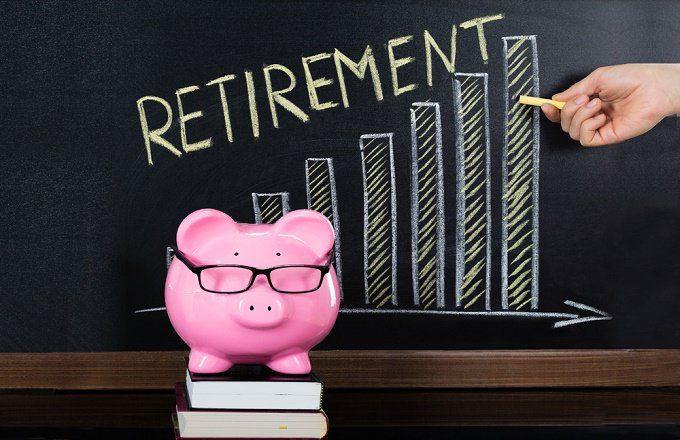If you are thinking about how you will provide for yourself in retirement, the main task that you have to solve before entering a well-deserved rest is to create the necessary retirement capital.

This is the amount that will accumulate in your accounts by retirement age and will bring you a regular passive income sufficient to cover your daily needs and ensure the desired lifestyle.
It is important to understand that the guidelines for how much to save and at what age in this article are not suitable for everyone.
The most important thing is to make sure that your financial situation is stable, plan for the future and make the necessary adjustments at every stage of life.
You need to study the following information to provide a good financial retirement period to yourself.
Because retirement doesn’t mean that life is ending, you can continue to enjoy every age!
- Budget Planning
Think about your plans for the future, calculate possible expenses for meeting basic needs, as well as additional expenses, such as entertainment and other needs.
Although you are now financially independent, in adulthood you may need funds for treatment or special care.
Determine if your retirement payments will be enough to cover these costs, or if you need additional funds.
Evaluate your assets, for example, existing savings, do not forget also about debts and mandatory payments, if any.
So you can understand whether you will have enough funds for basic needs, as well as for additional expenses in case of unforeseen circumstances.
- Cost Reduction
It is very important to understand that the level of income, as a rule, decreases closer to retirement age.
Based on this, you need to think about what money can be spent on, and how you can reduce and / or control your expenses.
Analyze your needs and consider which expenses can be cut without sacrificing quality of life.
Of course, cutting costs changes the way of life, but in this way you can look more confidently into the future.
Try to write down all expenses, not just basic ones like food and utilities, but also non-obvious and small ones like cigarettes or snacks.
As a rule, a lot of money is spent on little things.
Some expenses, such as morning coffee on the way to work, becomes a habit, but if you exclude them, you can see significant savings.
- Retirement Planning
You can save up for retirement on your own due to the endowment insurance with the help of cumulative and retirement insurance.
The presence of such a policy will provide you with a lifetime retirement, which will become an airbag for you, regardless of the economic situation in the country.
During the accumulative period of the policy, you can receive a social tax deduction annually.
Also, for the entire period of insurance, there is protection against the risks of death and disability.
You can calculate the amount of the guaranteed payment at the stage of applying for the policy.
30 Years Old
Some consulting companies say that at 30, you need an amount equal to half your salary, and at 35, an amount equal to one salary.

However, it’s very important to pay your debt off before saving.
You can make it with the help of personal loans, because a personal loan is a cash advance that you borrow from a lender and you can spend it on all that you want, for example, on consolidation of your debt.
When you are between 20 and 35 years old, you have more than 30 years of active work ahead.
But it’s also a good time to try out different trending ways to get some additional money, for example, you may consider trying a instant direct deposit loans online, which is a modern worthy substitute to affiliate marketing in a digital era.
From an investment standpoint, this is the perfect time to build a more aggressive portfolio focused on maximizing capital appreciation.
Therefore, during the accumulation period, it makes sense to keep most of the money (up to 80–90%) in shares.
Over a long period of time, stocks grow in price much more than other categories of assets.
And the presence of a long investment horizon (20 years or more) allows the investor to take on bigger risks and more easily survive periods of short-term instability that stock markets periodically face.
This strategy of investment distribution works well in the initial period – the period of capital accumulation.
Active Period
35-60 years old is the age when you are usually at the peak of your career and earnings, this gives you the maximum opportunities for savings and investments.
Based on the statistics, 64% of Americans aren’t prepared for retirement, and 48% don’t care.
But as you now face a shorter time horizon as an investor, you may naturally want to balance the risks.
This is the time when it is necessary to gradually change the strategy, reduce risks, switch to more conservative instruments, so that by the time of retirement (if it suddenly happens during a period of some kind of crisis or turbulence) you do not lose the accumulated funds.
Stocks may still play an important role in your portfolio, the distribution of asset classes is shifting slightly more towards safer securities such as investment grade bonds.
The classic proportion of the distribution of assets in the portfolio during this period looks like this: 60% stocks, 40% bonds.
Simplified, the 60/40 asset allocation rule works like this: how old are you, this is the proportion of bonds that should be in your portfolio at the current time.
This asset allocation is simple and has been considered the most efficient for the past 40 years.
Retirement Age
At this time, the investor’s risk profile usually becomes as conservative as possible.
After all, when a person turns into a rentier and begins to live on interest from his capital, it is important for him to minimize risks in order to preserve the body of capital and maximize passive income.
At this stage, it is important to understand what kind of regular income from existing capital in the current conditions, in principle, you can receive.
The return on investment always depends on market rates in a given period. Returns on market instruments always correlate with rates.
So, if the risk-free rate is at the level of 1%, then corporate bonds are unlikely to bring you 10% per annum.
Based on the general level of market rates, it will be possible to understand what to invest in to get the maximum passive income.
By the way, one of the assets that diversifies the sources of rental income well at the retirement stage is real estate (the advantage of this asset is that it provides a guaranteed income and rarely revalued).
Also, read about Major Digital Marketing Skills Students Won’t Learn in College, 12 Social Media Red Flags in Your Relationship You Should Pay Attention To & 2022 Best Bachelor’s Marketing Programs.









